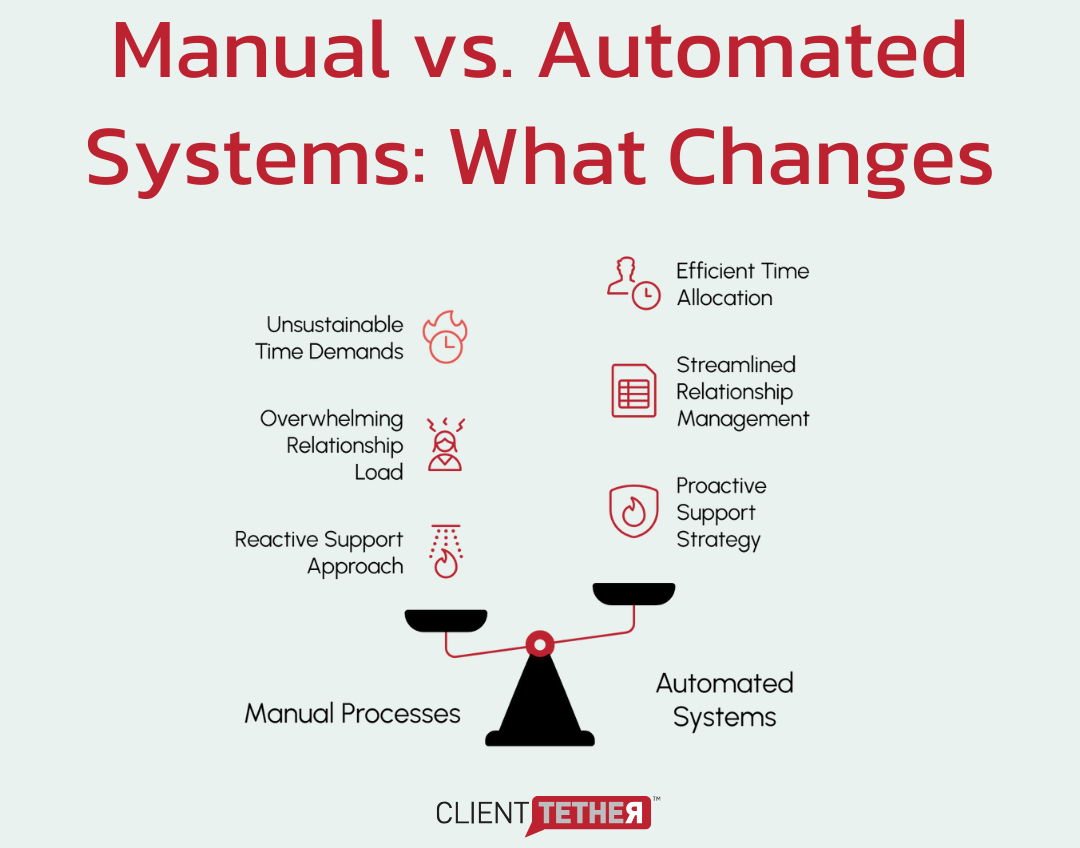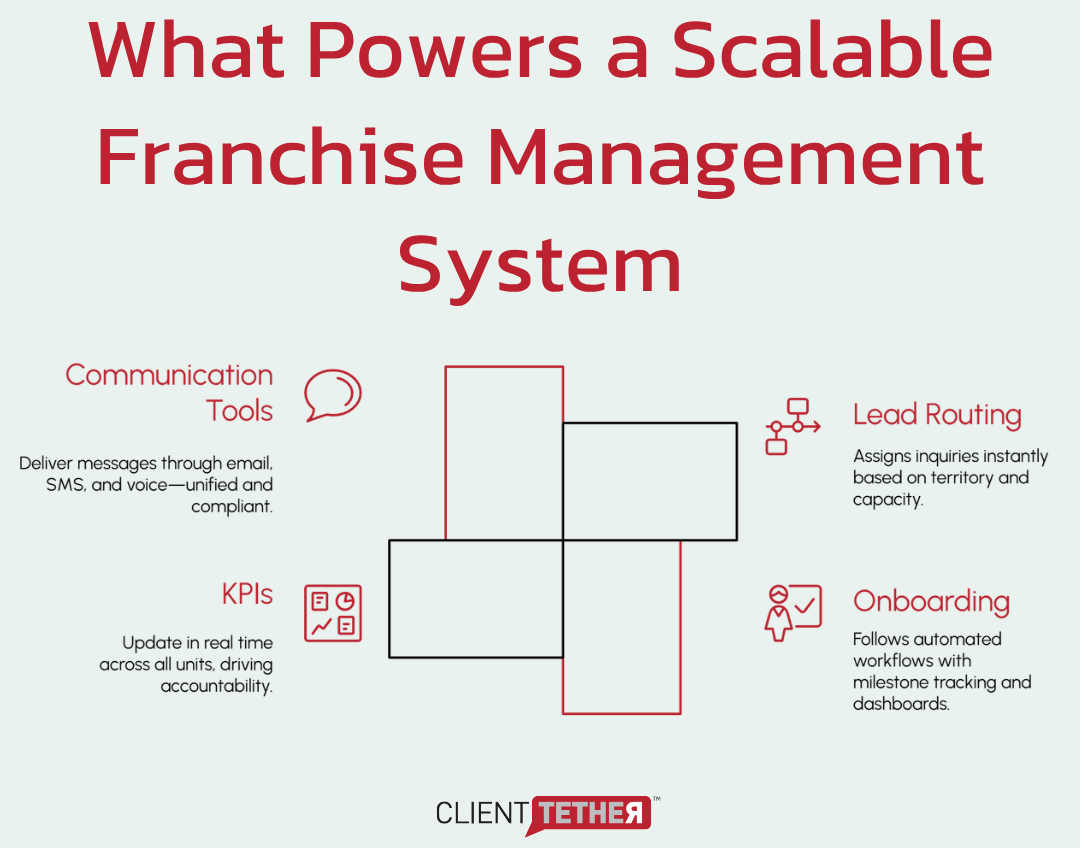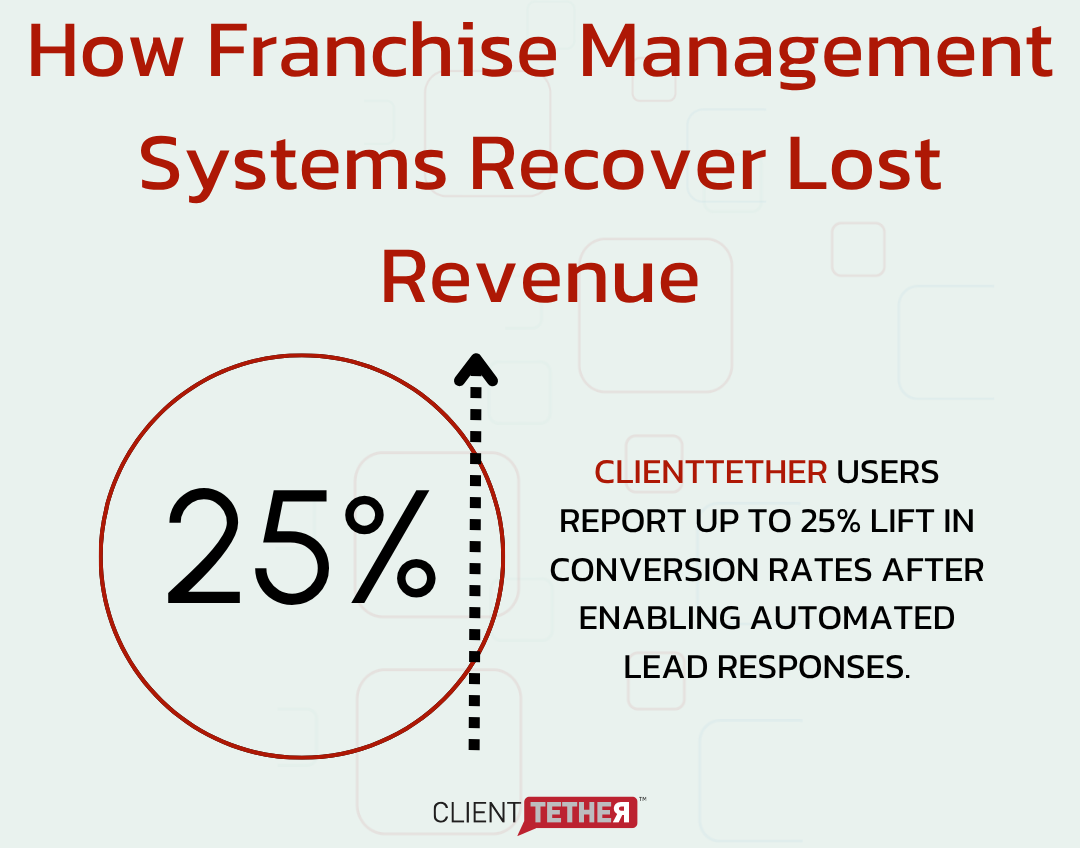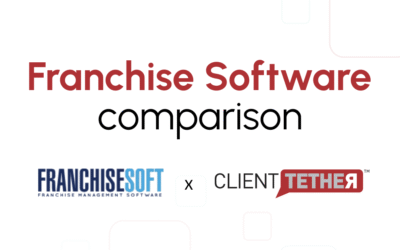I still remember the week we opened our tenth branch.
The phones were ringing off the hook. Our field advisors were stretched to their limits, driving for hours between stores trying to put out fires.
What was working at five branches was falling apart at ten: growth exposes operational chaos. That’s when we realized the missing piece wasn’t more people, but the right franchise management system.
The difference always comes down to the right infrastructure at the right time. If you’re approaching ten branches and still relying on manual processes, this is the tipping point. What you do next will determine whether you scale… or stagnate.
- What happens when multi-unit franchises outgrow manual processes?
- How does a franchise management system transform multi-unit operations?
- What ROI can multi-unit operators expect from a franchise management system?
- Your next strategic move
What happens when multi-unit franchises outgrow manual processes?
At the 10-unit mark, manual systems create cascading failures. Decision bottlenecks emerge as information gets trapped in silos.
Communication breaks down with 40% of corporate messages of corporate messages never reaching franchisees intact.
Most critically, franchisee satisfaction plummets as support becomes reactive rather than proactive.
The 10-Unit Breaking Point
Ten units represent the mathematical limit of manual processes. Each franchisee requires a minimum of two hours weekly for meaningful support; that’s twenty hours at ten units before addressing any strategic initiatives.
Add lead management, compliance monitoring, and performance tracking, and you’re facing 60-70 hour weeks that still leave critical tasks undone.
The cognitive load becomes equally unsustainable. Each franchise location involves multiple relationships: the franchisee, their management team, key vendors, and operational touchpoints.
By ten units, you’re managing 50-60 critical relationships while trying to maintain strategic vision. The human brain simply cannot process this complexity effectively through manual methods.
Response times stretch from hours to days. Personal coaching calls become group emails. Proactive support transforms into reactive firefighting.
The intimate franchise partnership that drove initial success dissolves into transactional relationships.
Warning Signs Your System Is Failing
Operational red flags appear in sequence, providing early warning for those paying attention.
- Communication gaps emerge first: when you spend more time clarifying previous communications than delivering new ones, your system has already failed.
- Lead response times offer another clear indicator: industry standards demand five-minute response times for optimal conversion with each hour of delay reducing conversion probability by 10-15%.
- Brand inconsistency spreads as franchisees develop workarounds for inadequate support: without centralized systems and regular communication, each unit begins operating as an independent business and the customer experience becomes unpredictable.
- Team burnout provides the final warning: when operations managers spend days updating spreadsheets instead of coaching franchisees or when field consultants can’t visit locations due to administrative burdens, your organization has shifted from growth mode to survival mode.
Manual vs. Systematized Franchise Operations
The contrast is stark. Without a franchise management system, mornings begin in chaos, triaging emails, updating spreadsheets, and manually assigning leads.
Reports take hours, strategy gets sidelined, and franchise coaching falls off the radar.
With the right system, dashboards surface what matters, leads route automatically, and field teams focus on growth, not cleanup.
How does a franchise management system transform multi-unit operations?
A franchise management system can reduce admin work, centralize data, and give multi-unit operators real-time visibility.
Core Functions That Drive Stability
The best systems handle lead routing, onboarding, performance tracking, and communication, all in one place.
- Lead routing assigns inquiries instantly based on territory and capacity.
- Onboarding follows automated workflows with milestone tracking and dashboards.
- KPIs update in real time across all units, driving accountability and self-correction.
- Communication tools deliver messages through email, SMS, and voice—unified and compliant.
Centralization Without Losing Agility
Smart systems allow customization without chaos.
Role-based permissions let teams focus. Multi-brand portfolios share infrastructure while preserving brand identity. The key is to standardize the process, not the outcome.
Creating Visibility and Accountability
Transparency replaces guesswork. If everyone sees the same data, field teams act faster.
High performers lead by example. Training, compliance, and campaign tracking become visible and scalable. You get alignment without micromanagement.
What ROI can multi-unit operators expect from a franchise management system?
Most established franchisors see positive ROI within 4-6 months.
The combination of improved lead conversion, reduced administrative burden, and faster franchisee onboarding typically delivers 200-300% returns within the first year.
But the real story lies in understanding both what you lose without systems and what you gain with them.
Quantifying the Cost of Operational Chaos
Manual operations bleed time and money. Just handling internal communication can eat up 10 to 15 hours per week per team member.
For a five-person corporate team, that’s over 2,500 hours a year, time spent chasing clarity instead of driving growth.
Lead delays cost even more. I’ve seen franchises generate 100 leads per location each month, then wait days to respond. The result is dozens of lost sales per unit per year.
Compliance issues carry real risks too. When violations slip through the cracks, they trigger bad reviews, customer churn, and potential legal trouble (one serious mistake can cost more than an entire year of proper systems).
Worst of all, disorganized operations lower your business valuation. Investors see the chaos and apply a discount. Strong systems improve efficiency, protect revenue, reputation, and long-term value.
- Automated lead responses increase conversion by up to 25%. Faster follow-ups means more deals closed.
- Onboarding improves, too. With standardized training, new franchisees ramp up quickly, saving time and boosting early profitability.
- Consistency across units improves customer experience.
When every location runs the same playbook, satisfaction rises and retention grows.
Better systems mean fewer mistakes, steadier revenue, and stronger lifetime value, all without adding headcount.
Strategic Benefits Beyond Cost Savings
With real-time data replacing gut instinct, expansion decisions become strategic rather than hopeful.
You know which markets perform, which franchisee profiles succeed, and where to invest growth capital for maximum return.
Perhaps most critically, proper systems make you investment-ready. Whether you’re seeking growth capital or planning an eventual exit, professional infrastructure commands premium valuations.
The same systems that streamline daily operations position your franchise for strategic opportunities. I’ve seen well-systematized franchises command multiples 2-3x higher than their manually-operated competitors.
The math is clear: the cost of not implementing a franchise management system far exceeds the investment required.
Your Next Strategic Move: Franchise Management System that fits
Here’s what separates thriving multi-unit operations from those stuck in perpetual firefighting mode: the courage to implement before the pain becomes unbearable.
Every day you delay systematizing your operations is another day your competitors gain ground. While you’re drowning in spreadsheets and missed follow-ups, they’re closing deals and expanding territories.
A proper franchise management system pays for itself within months, through recovered leads alone. Add the compound effect of better compliance, faster onboarding, and consistent execution across all units, and you’re looking at exponential returns.
ClientTether exists because we lived through the alternative. We built what we desperately needed when we were in your shoes.







